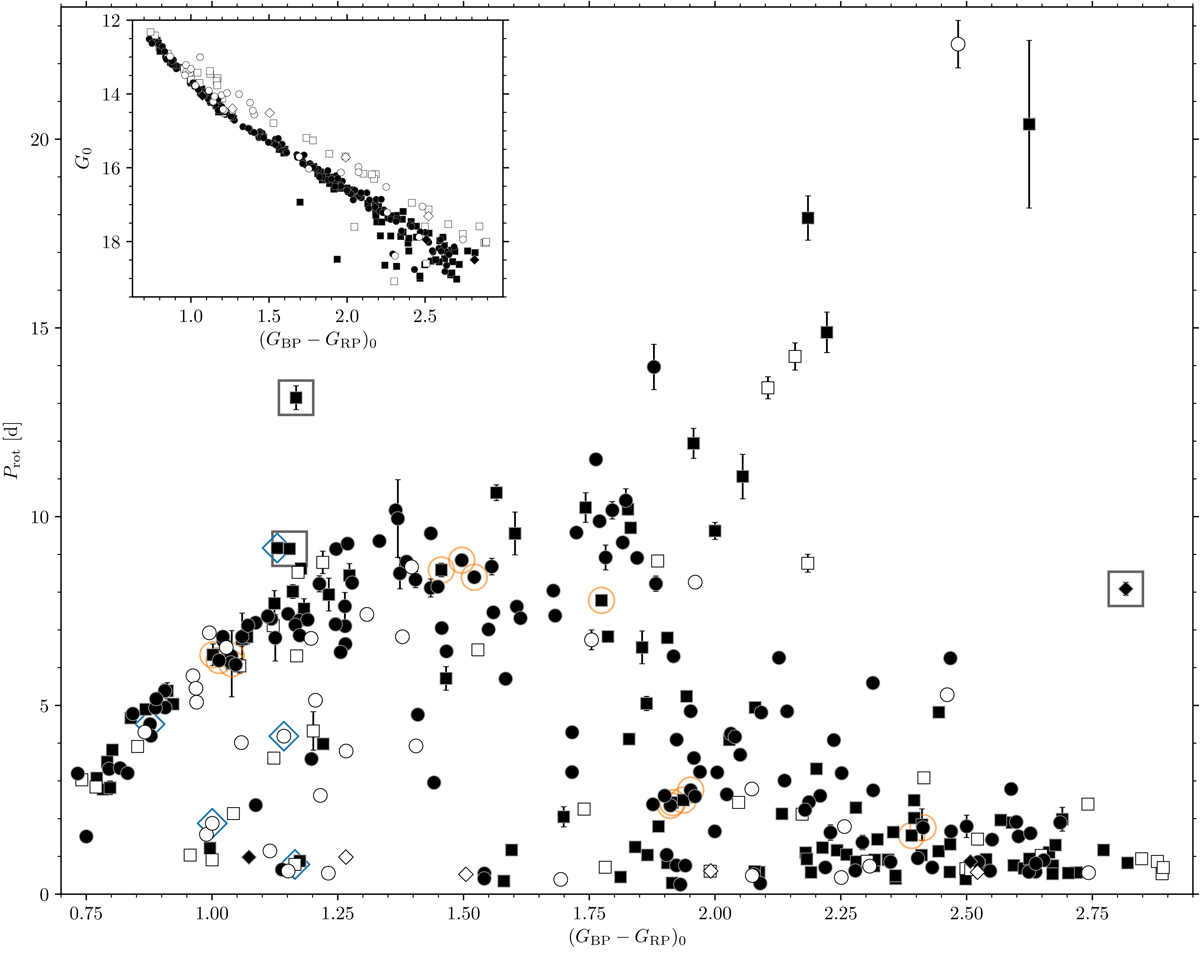Fig. 12.

Colour-period diagram (CPD) for NGC 2516 (large figure) using (GBP − GRP)0 colour, with an inset displaying the corresponding colour-magnitude diagram (CMD) for the rotators. Symbols have identical meaning in both plots. A well-defined slow rotator sequence (upper boundary) is visible, as well as a fast-rotation boundary that is increasingly well-populated among cooler stars. The triangular region between these is also occupied, and the paucity of outliers is remarkable. Obvious rotation periods are marked with circles (both filled and unfilled) and less evident (algorithmic) periods with squares. (We note that the distributions are identical). Small diamonds indicate the few possibly aliased periods. Period uncertainties are only visible when they exceed the symbol sizes. Filled symbols denote single stars (really, those without known companions to date), while open symbols indicate known or suspected binaries (of all separations), either from photometry or spectroscopy or both. Five symbols enclosed within large blue diamonds indicate those with Porb < 10 d as determined by Bailey et al. (2018), while those enclosed by large black squares are discussed individually in the text. Stars enclosed within orange circles are those whose light curves are displayed for illustrative purposes in the appendix (Fig. A.1).
Current usage metrics show cumulative count of Article Views (full-text article views including HTML views, PDF and ePub downloads, according to the available data) and Abstracts Views on Vision4Press platform.
Data correspond to usage on the plateform after 2015. The current usage metrics is available 48-96 hours after online publication and is updated daily on week days.
Initial download of the metrics may take a while.


